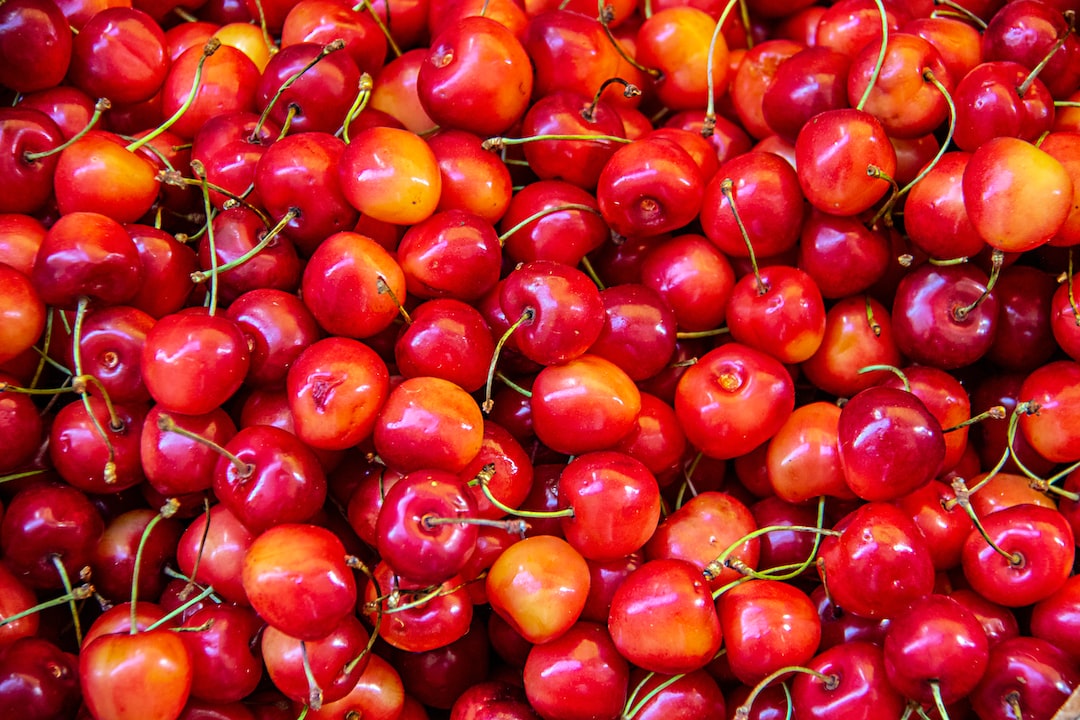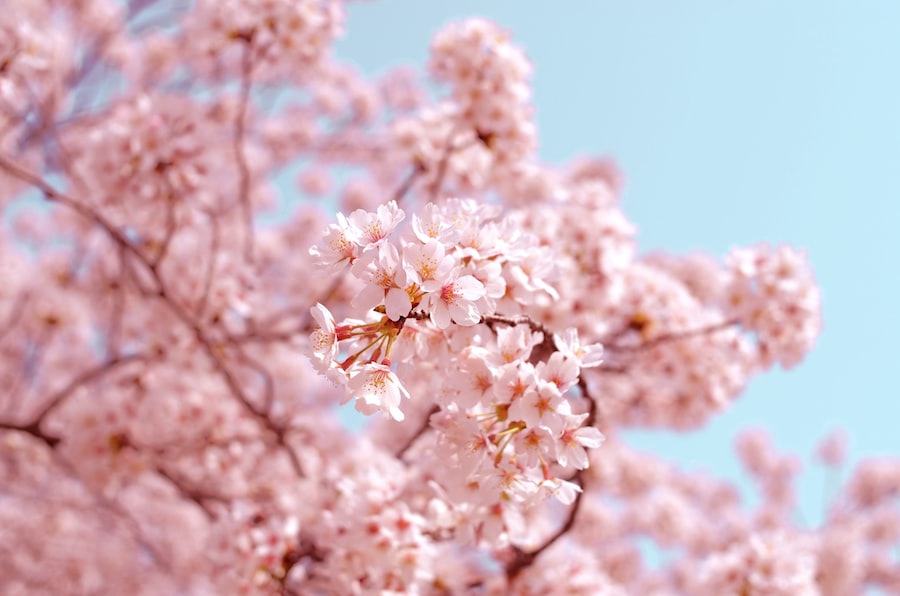From Seed to Fruit: A Guide to Germinating Cherry Seeds

Growing cherries from seed can be a rewarding and fulfilling experience. Not only do you get to witness the entire life cycle of a cherry tree, but you also have the opportunity to grow unique and potentially delicious varieties of cherries. While it may take some time and patience, germinating cherry seeds is a relatively simple process that can be done by anyone with a green thumb.
One of the main benefits of growing cherries from seed is the potential for variety. When you grow cherries from seed, you have the chance to discover new and unique flavors that may not be available in commercially grown cherries. Additionally, growing cherries from seed allows you to have a deeper connection with your plants, as you are involved in every step of their growth.
Key Takeaways
- Germinating cherry seeds is a rewarding and cost-effective way to grow your own cherry trees.
- Understanding the germination process and preparing the seeds properly is crucial for success.
- Choosing the right soil and providing proper watering, temperature, and light conditions are key factors in successful germination.
- Common problems with germination can be fixed with simple solutions, such as adjusting watering or temperature.
- Caring for cherry seedlings involves regular watering, fertilizing, and pruning to promote healthy growth and fruit production.
Understanding Cherry Seed Germination
Cherry seed germination is a natural process that occurs when the conditions are right for the seed to sprout and grow into a new plant. The science behind cherry seed germination involves a combination of factors such as temperature, moisture, and light. These factors work together to trigger the seed’s dormancy and initiate the growth process.
Factors that affect cherry seed germination include temperature, moisture, light, and stratification. Temperature plays a crucial role in cherry seed germination, as it determines when the seed will break dormancy and start growing. Moisture is also essential for germination, as it helps soften the seed coat and allows water to penetrate the embryo. Light is another important factor, as it signals to the seed that it is time to start growing. Finally, stratification is a process that mimics the natural conditions that cherry seeds would experience in their native environment.
Preparing Cherry Seeds for Germination
Before you can begin germinating cherry seeds, you need to collect them and prepare them for planting. To collect cherry seeds, simply remove them from ripe cherries and rinse off any excess fruit pulp. Once the seeds are clean, you can dry them by spreading them out on a paper towel or a clean, dry surface. Make sure to keep the seeds in a cool, dry place until you are ready to plant them.
Stratification is an important step in preparing cherry seeds for germination. This process involves exposing the seeds to cold temperatures for a period of time, which helps break their dormancy and prepares them for germination. To stratify cherry seeds, place them in a plastic bag with some moistened peat moss or vermiculite. Seal the bag and place it in the refrigerator for about 8-12 weeks. This mimics the cold winter conditions that cherry seeds would experience in their natural environment.
Choosing the Right Soil for Cherry Seed Germination
| Soil Type | Germination Rate | Days to Germinate | Seedling Survival Rate |
|---|---|---|---|
| Loamy Soil | 90% | 14 days | 85% |
| Sandy Soil | 80% | 18 days | 75% |
| Clay Soil | 70% | 21 days | 65% |
| Peat Soil | 95% | 12 days | 90% |
Choosing the right soil for cherry seed germination is crucial for the success of your plants. The ideal soil for cherry seed germination should be well-draining and rich in organic matter. It should also have a slightly acidic pH level, around 6.0-6.5.
To prepare the soil for cherry seed germination, start by removing any weeds or debris from the planting area. Loosen the soil with a garden fork or tiller to improve drainage and aeration. If the soil is heavy clay or sandy, you may need to amend it with organic matter such as compost or well-rotted manure to improve its texture and fertility.
Watering Cherry Seeds: Dos and Don’ts
Proper watering is essential for cherry seed germination. The seeds need to be kept consistently moist but not waterlogged. Overwatering can lead to rotting of the seeds or damping off of the seedlings, while underwatering can cause the seeds to dry out and fail to germinate.
When watering cherry seeds, it is important to water from the bottom rather than from the top. This helps prevent the seeds from being washed away or disturbed. To water from the bottom, place the seed tray or container in a shallow tray filled with water. Allow the water to soak up through the drainage holes in the bottom of the container until the soil is evenly moist.
Mistakes to avoid when watering cherry seeds include overwatering, underwatering, and using cold water. Overwatering can lead to root rot and other fungal diseases, while underwatering can cause the seeds to dry out and fail to germinate. Additionally, using cold water can shock the seeds and slow down their germination process.
Temperature and Light Requirements for Cherry Seed Germination

Temperature and light are two important factors that affect cherry seed germination. The optimal temperature range for cherry seed germination is between 60-70°F (15-21°C). This temperature range provides the ideal conditions for the seeds to break dormancy and start growing.
In terms of light requirements, cherry seeds do not require direct sunlight to germinate. In fact, they prefer indirect or filtered light during the germination process. You can provide adequate light for cherry seed germination by placing them near a bright window or using fluorescent grow lights.
Common Problems with Cherry Seed Germination and How to Fix Them
While germinating cherry seeds is a relatively straightforward process, there are some common problems that can arise. One common issue is poor germination rates, which can be caused by factors such as old or damaged seeds, improper stratification, or unfavorable growing conditions.
To fix poor germination rates, it is important to start with fresh, healthy seeds and ensure that they have been properly stratified. Additionally, make sure that you are providing the right growing conditions for your cherry seeds, including proper temperature, moisture, and light levels.
Another common problem with cherry seed germination is damping off, which is a fungal disease that causes the seedlings to rot at the base and collapse. Damping off can be prevented by using clean, sterile soil and containers, avoiding overwatering, and providing good air circulation around the seedlings.
Transplanting Cherry Seedlings: When and How to Do It
Once your cherry seedlings have grown to a suitable size, they can be transplanted into larger containers or into the ground. The best time to transplant cherry seedlings is in the spring, after the danger of frost has passed and the soil has warmed up.
To transplant cherry seedlings, start by preparing the new planting site. Dig a hole that is slightly larger than the root ball of the seedling and gently place the seedling into the hole. Backfill the hole with soil, making sure to firm it gently around the roots. Water the newly transplanted seedling thoroughly to help settle the soil and remove any air pockets.
Caring for Cherry Seedlings: Tips and Tricks
Caring for cherry seedlings involves providing them with the right growing conditions and protecting them from pests and diseases. After transplanting, make sure to water your cherry seedlings regularly to keep the soil evenly moist. Avoid overwatering, as this can lead to root rot and other fungal diseases.
To promote healthy growth of your cherry seedlings, it is important to provide them with adequate sunlight. Place them in a sunny location or use grow lights if necessary. Additionally, make sure to fertilize your cherry seedlings regularly with a balanced fertilizer to provide them with essential nutrients.
Harvesting and Enjoying the Fruits of Your Labor: Growing Cherries from Seed
Growing cherries from seed is a long-term investment that requires patience and dedication. It can take several years for cherry trees to bear fruit, so it is important to be prepared for a wait. However, once your cherry trees start producing fruit, the rewards are well worth it.
When it comes time to harvest your cherries, make sure to pick them when they are fully ripe. Cherries should be firm and plump with a deep, rich color. To harvest cherries, simply twist or cut the stem just above the fruit. Avoid pulling on the fruit, as this can damage the tree and reduce future yields.
In conclusion, germinating cherry seeds is a rewarding and fulfilling process that allows you to grow unique and potentially delicious varieties of cherries. By understanding the science behind cherry seed germination and providing the right growing conditions, you can successfully grow cherries from seed. With patience and care, you can enjoy the fruits of your labor for years to come. So why not give it a try and start growing cherries from seed today?



